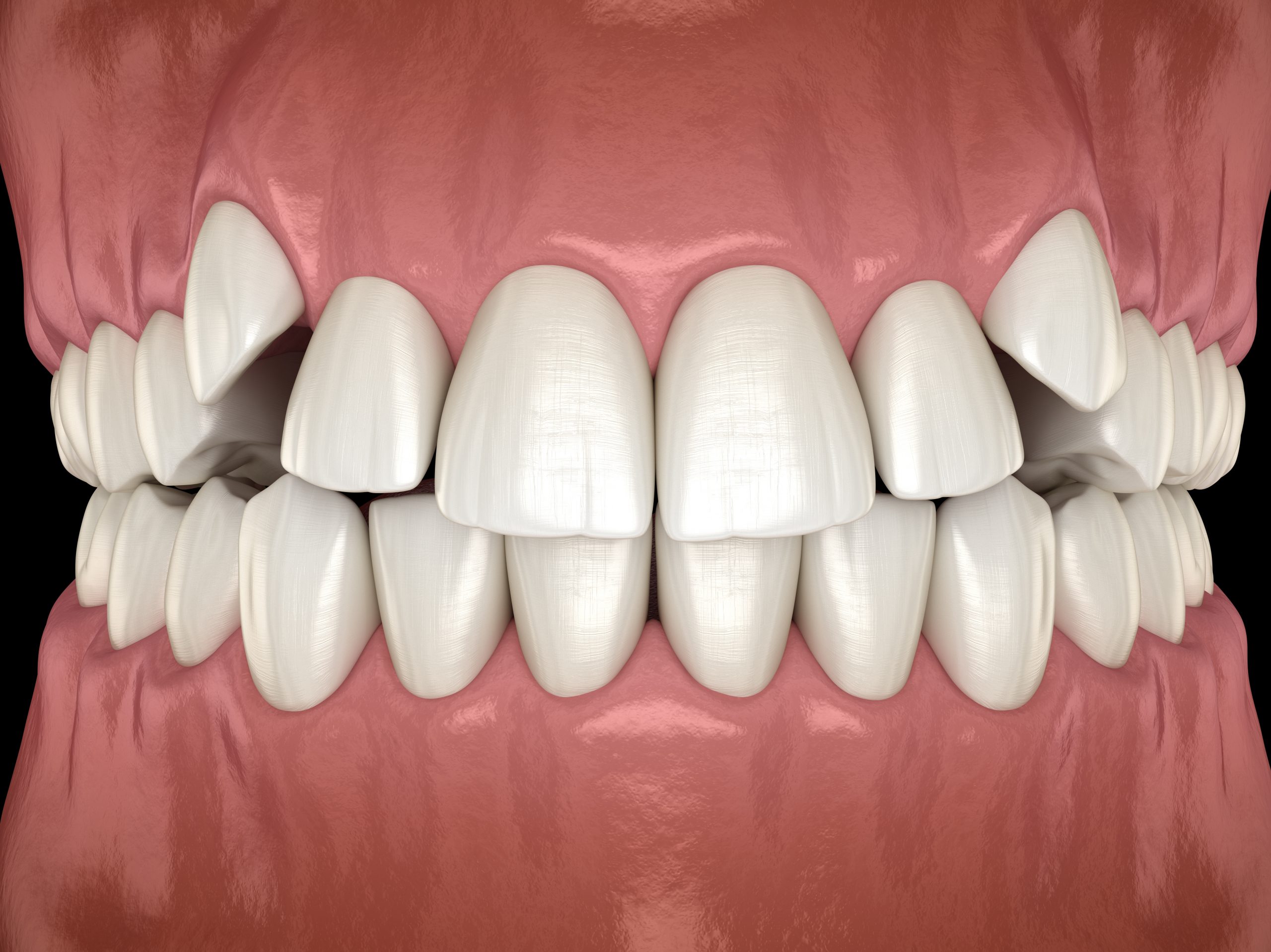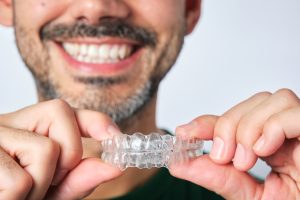Good teeth are the building blocks for great smiles, but the importance of having healthy and well aligned teeth goes far beyond just aesthetic benefits. Teeth misalignment can cause a slew of health issues when the misalignment eventually affects your bite and the way your teeth function, not to mention added difficulties in the maintenance of your oral hygiene. In the extensive scope of issues with teeth alignment falls the problem of tooth overcrowding, which can cause problems in your bite and affect other factors of your health in the long run. While it is highly recommended to consult with a licensed dental professional first to receive proper treatment, there are some visual cues and warning signs you can watch out for to determine if your teeth are overcrowded. To learn more about dental crowding and the best way to resolve it, read on.
What is Dental Crowding?
Dental crowding is a classification of malocclusions that occur when the mouth does not have enough room for a patient’s teeth. As a result of this lack of space, teeth are not able to grow into their natural and correct positions, causing them to find space to grow even at the expense of displacing and rotating other teeth. This then leads to misaligned teeth that appear crooked and crowded.
Because each patient’s case is different and should be treated accordingly, dentists and orthodontists have developed a way to categorize dental crowding cases. The classifications of tooth overcrowding and dental crowding depend on the degree of overcrowding in the teeth, which then directly affects how they should be treated and how long:
- Mild dental crowding
Cases of mild dental crowding are considered to have a crowding/spacing discrepancy of 0-3 mm
- Moderate dental crowding
Cases of mild dental crowding are considered to have a crowding/spacing discrepancy of 4-8 mm
- Severe dental crowding
Cases of mild dental crowding are considered to have a crowding/spacing discrepancy of over 8 mm. This includes cases with supernumerary teeth or teeth that have grown outside of the usual number of teeth, and can appear as a single tooth or multiple teeth in a case.
The proper way to approach treatment would be to get a professional assessment first, with well-trained and highly qualified dentists. To find out more about one of the best options available on the market that effectively addresses tooth overcrowding, take a look at our how ALINA works pages.
What Causes Dental Crowding?
Dental crowding can be caused by a range of factors that affect the growth and placement of teeth. Some common factors include:
- Teeth larger than the jaw
Genetics plays a major part in dictating the size and appearance of the teeth. If a patient’s teeth are larger than the jaw, some teeth may not fit comfortably together, causing overlapping and twisting.
- Having a smaller jaw
Some patients may be born with proportionally smaller jaws, and this can often cause spacing and eventually overcrowding issues once their permanent teeth begin growing in.
- Early loss of primary teeth
When a patient loses a primary tooth too early in their lives, whether through childhood accidents or naturally, other teeth can begin to move into the space it once occupied.
- Delayed loss of primary teeth
If a patient’s primary or baby teeth are not removed from their original spots before permanent teeth are ready to erupt, they become over-retained, causing both primary teeth and permanent teeth to grow in competition with one another.
- Age
As a patient gets older, their jaw bone can begin to shrink as a result of decreasing bone density. Because of this, overlapping and overcrowding can occur across the dental arch–most commonly in the front of the bottom row of teeth.
What Are the Signs of Dental Crowding?
While only a dentist or orthodontist can be able to determine a case of overcrowding and its specific classification, a patient can assess their teeth and watch for early warning signs. Some of these indicators can include the following:
- Crooked teeth or teeth that have grown in unnatural angles
- Discomfort in some areas or specific teeth when biting down
- Recurring pain in the jaw
- Difficulty when chewing food or biting
- Having trouble flossing and brushing
If you experience any or a combination of these symptoms, your teeth may be overcrowded, indicating the need to approach a dental medical professional. Once you have been assessed and cleared for treatment, you may now begin your journey to evenly spaced and well-aligned teeth, giving you a boost in confidence and preventing any health complications that may arise.

Is Crowding Bad for Your Teeth?
Not only is crowding bad for a patient’s teeth, it can also negatively impact your overall oral health. Overcrowding makes it difficult for patients to clean, brush, and floss, putting them at risk of cavities and other oral infections. The discomfort of crowded teeth can also cause bite issues that can lead to temporomandibular joint pain, leading to migraines in the long run. Dental crowding can also lead to sleep apnea in the long run, as crowded teeth push can back a patient’s tongue and reduce their airway, causing them to snore or stop breathing in their sleep.
When it comes to tooth overcrowding, early diagnosis and treatment is the best course of action, allowing patients to enjoy healthy and aligned teeth for more of their adult life and reducing the risk of further complications in the future.
How is Dental Crowding Treated?
Currently, there are three primary methods that doctors can recommend for dental crowding:
- Extractions
Especially in cases where there are supernumerary teeth causing extreme dental crowding, dentists and orthodontists can sometimes recommend extractions. Once the extractions have been performed, teeth can now be guided to their proper places along the dental arch.
- Braces
There are various versions of braces available for patients with overcrowding and alignment issues. Patients can opt to get metal, sapphire, ceramic, or lingual braces as prescribed by their trusted providers.
- Invisible Braces
Invisible braces, sometimes referred to as clear aligners, are plastic trays that fit snugly along the dental arch. While wearing them, patients are able to treat tooth overcrowding discreetly and effectively, without sacrificing the appearance of their already crowded teeth. Invisible braces have been known to achieve great results much quicker than braces. Because invisible braces prices vary across different providers, it is important to select a provider that has a track record of great results and trusted quality materials. Although Invisalign is one of the most well-known clear aligner providers, there are some alternatives available that have unique features and innovative approaches to teeth alignment.
How ALINA Invisible Braces Help Treat Tooth Overcrowding
ALINA is a top alternative to Invisalign available on the market today, and can treat almost every mild to moderate kind of malocclusion, including overcrowding. This is because ALINA has:
- Better materials – ALINA’s invisible braces are made with a space-age, FDA-approved material that’s hypoallergenic and perfectly transparent, to fully allow patients to uncover their smiles.
- Better technology – Using Ai-powered AlinaSmile technology, the patient’s most beautiful smile is achieved, taking into consideration all of their facial features, not just their teeth.
- Better results – More than a million people throughout the US, Canada, and the UK have achieved beautiful smiles by partnering with ALINA.
Begin your journey to the smile of your dreams and book a consult with us today.






